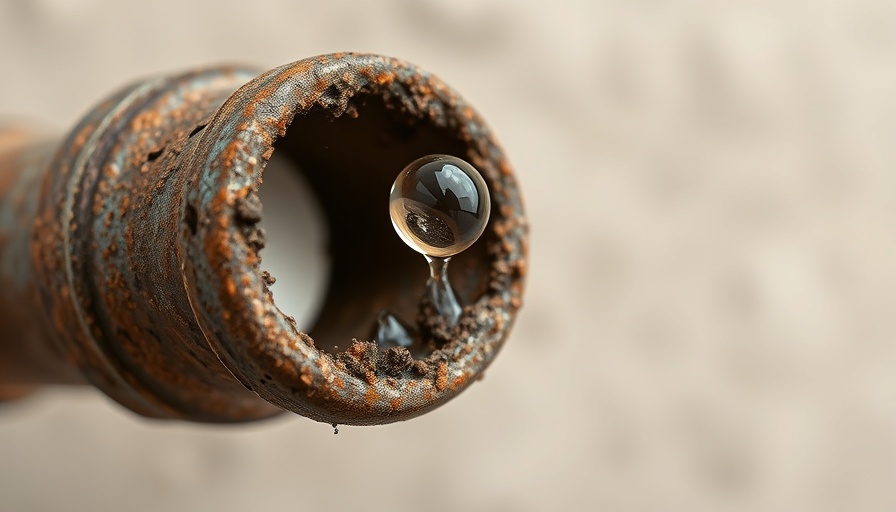
Understanding the Impact of a Burst Pipe
A burst pipe can lead not just to immediate inconvenience but also to significant structural damage. Particularly in winter, when temperatures plunge, the risk escalates. Water inside pipes freezes, expands, and exerts immense pressure until the pipe can no longer withstand it, often leading to a catastrophic rupture. Homeowners need to be prepared and educated about what steps to take promptly, minimizing the damage and preventing more costly repairs down the road.
Critical First Steps: Taking Action Immediately
The first action when discovering a burst pipe is to shut off the water main. This crucial step stops the flow of water, helping to reduce further damage. Following this, opening a faucet relieves pressure within the pipes, allowing any residual water to drain safely. These swift actions significantly mitigate the risk of flooding and subsequent mold growth in the affected areas.
Cleaning Up: The Importance of Immediate Water Removal
Once the initial steps are taken, it’s time to tackle the water left behind. Start mopping up or using a shop vacuum to eliminate standing water. The sooner this is done, the less chance there is for mold to take hold. Also, ensure proper ventilation by opening windows and doors to facilitate drying, which is essential for minimizing long-term damage.
Temporary Fixes: Quick Solutions for Leaks
If the burst pipe results in visible leaks, there are several DIY home repair tactics you can employ for a temporary fix. Using a piece of rubber and a clamp can help seal leaks until a professional can assess the damage. Adding a block of wood can provide additional sturdiness, distributing pressure and prolonging the life of your makeshift repair.
Heat Management: Thawing and Protecting Pipes
After dealing with immediate water control, focus on preventing further issues by managing temperature. Heating affected areas, especially where pipes are vulnerable like basements and crawl spaces, can help avert potential freeze-ups. Techniques include using fans to circulate warm air and applying heat gently through a hair dryer along affected pipes. By leaving the faucet open, you can observe as water begins to flow more freely, indicating that ice is melting.
Long-Term Solutions: How to Prevent Future Damage
After managing the current crisis, it's vital to consider preventive measures for the future. Insulating pipes in unheated areas or wrapping exposed pipes in insulation can be incredibly effective. Additionally, regular checks on your plumbing system during different seasons can help catch potential issues before they escalate into emergencies.
Common Misconceptions About Burst Pipes
There are several misconceptions about burst pipes that lead to confusion. One common myth is thinking that only old pipes can burst. In reality, any pipe, regardless of age, can be susceptible to freezing and bursting under the right conditions. Moreover, many people believe that once they experience one burst, future issues are inevitable. With proper care and preventative measures, you can maintain a healthy plumbing system.
Final Thoughts on Home Maintenance
Understanding the steps to take when a pipe bursts is crucial for every homeowner. Recognizing the indicators and taking quick action can mean the difference between a minor inconvenience and a financial disaster. Home maintenance goes beyond fixes to be proactive in protecting your space.
Take Action Now!
Don’t wait until it's too late—take action now to ensure your home is prepared for any plumbing issues. Regular maintenance checks, securing insulation, and having a DIY home repair toolkit on hand can save you time, money, and stress in the long run.
 Add Row
Add Row  Add
Add 




Write A Comment